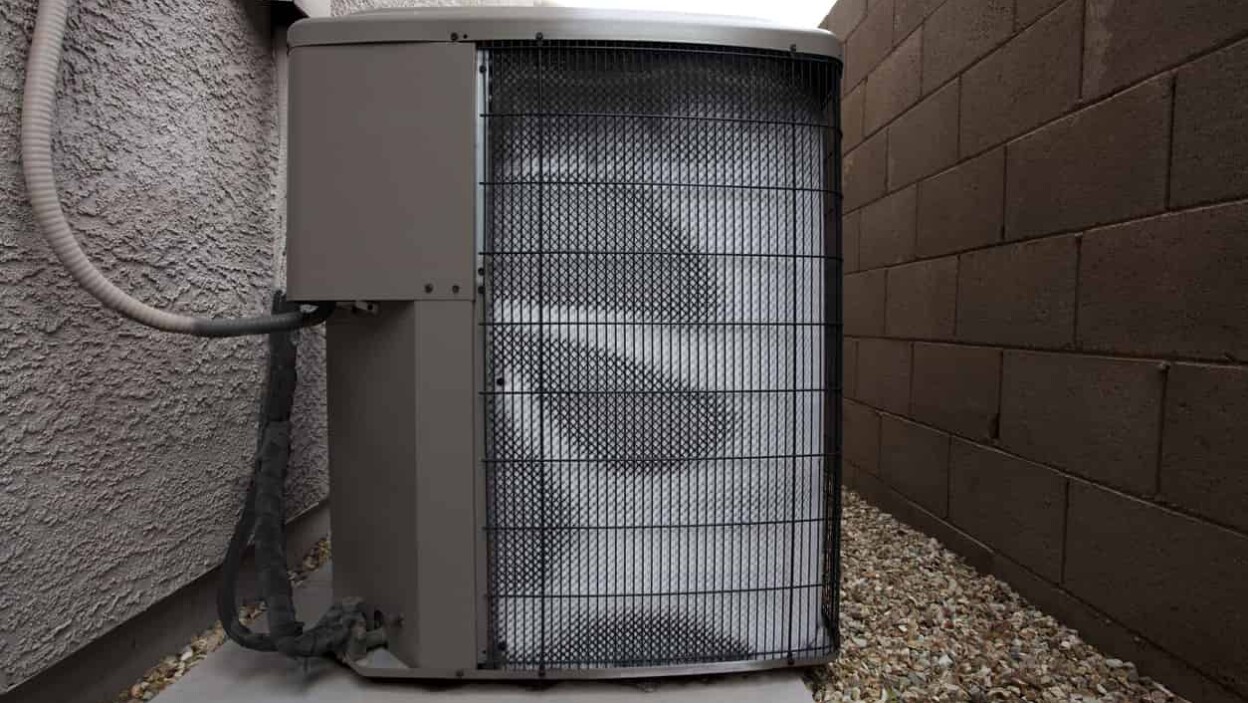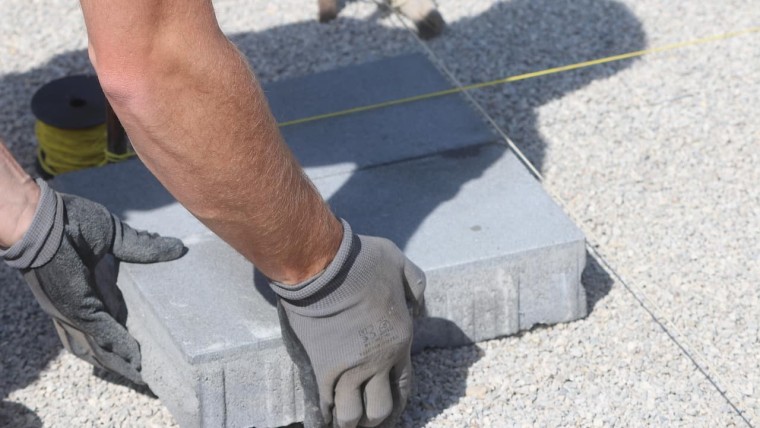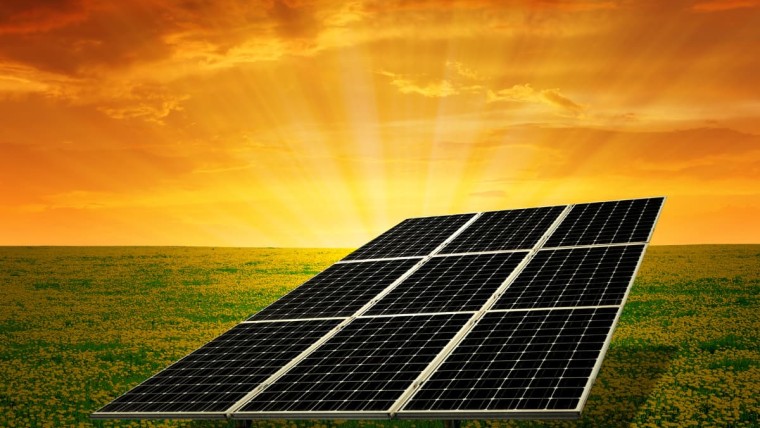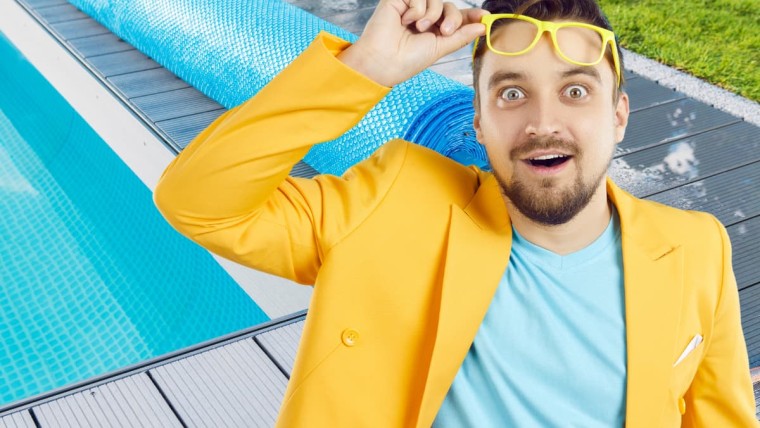If you decide to install your air-to-water heat pump outdoor unit in front of your house, you may wonder if there is a distance to the wall of your own house.
The distance between the wall and the outdoor unit of the heat pump should be between 30cm and 50cm, depending on the manufacturer.
In fact, heat pump manufacturers usually advise a distance of 300mm between the back of the outdoor unit and the wall, as well as 500mm between the front of the outdoor unit and a possible wall in front. This is to facilitate the air circulation, both at the suction and the discharge side, and thus to ensure the power supplied by the machine.
But we will see that not all suppliers agree on the same figures, and that it depends on the configuration of the place where you want to install the heat pump outdoor unit.
How far is the wall from the heat pump?
If you look at the various installer's manuals, you can agree on a distance of 300mm between the rear part (outside air intake) of the outdoor unit of the heat pump and the wall of the house. This is valid for the standard case: simply place the outdoor unit along the wall of the house (not for other special cases, see below). The various manufacturers of heat pumps propose or advise, depending on their models, several distances to be respected so that everything goes well.
| Name of the heat pump manufacturer | Distance wall - back PAC | Distance to PAC at air discharge | Download the recommendations manufacturers |
| Daikin | 300mm or more | 500mm or more | Distance from Daikin heat pump wall |
| Toshiba | 150mm or more | 500mm or more | Distance from Toshiba PAC wall |
| Atlantic | 100mm or more | 600mm or more | Distance from Atlantic PAC wall |
| Hitachi | 100mm or more | 700mm or more | Distance from Hitachi PAC wall |
| NIBE | 350mm or more | 1000mm or more | Distance from the wall PAC NIBE |
| Panasonic | 100mm or more | 1000mm or more | Distance heat pump wall Panasonic |
| Stiebel Eltron | 200mm or more | 2000mm or more | Wall distance heat pump Stiebel Eltron |
| Viessmann | 100-200mm or more* | 1000mm or more | Distance from the wall of a Viessmann heat pump |
| De Dietrich | 100mm or more | 500mm or more | Distance from the wall of a De Dietrich heat pump |
| LG | 300mm or more | 700mm or more | Distance from the wall of the LG heat pump |
*depending on power
Some examples in pictures:
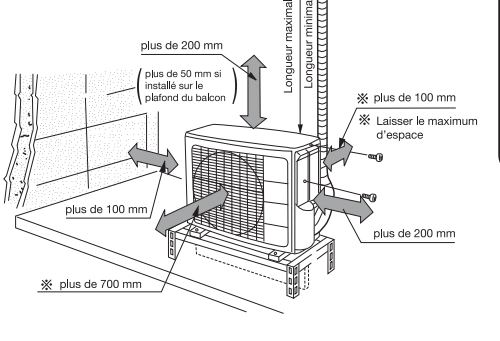
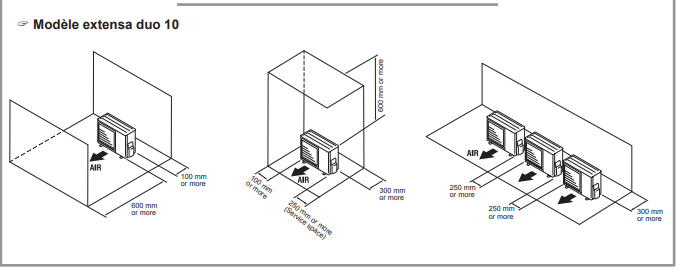
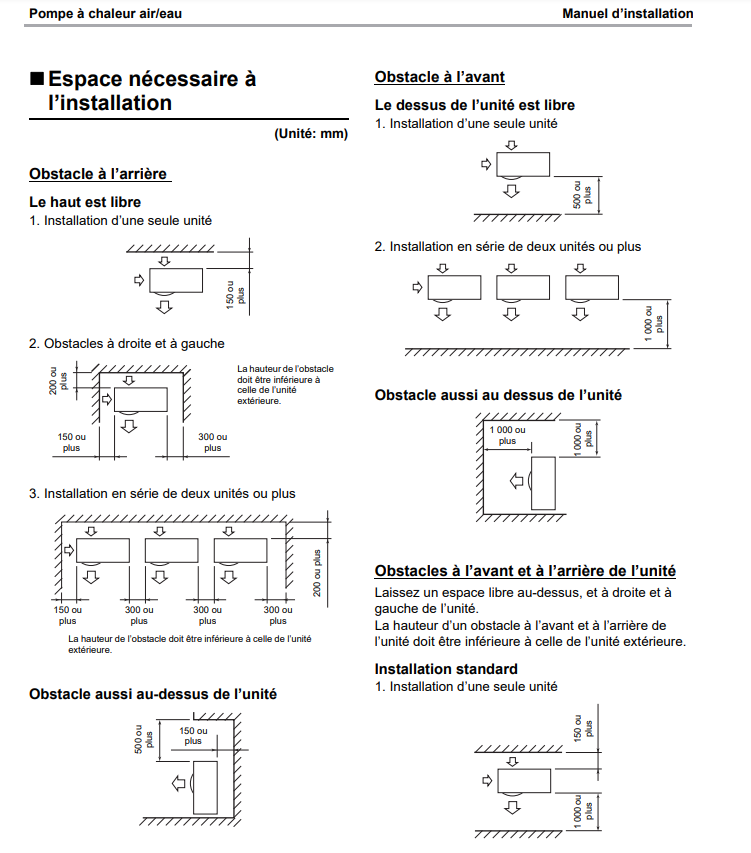
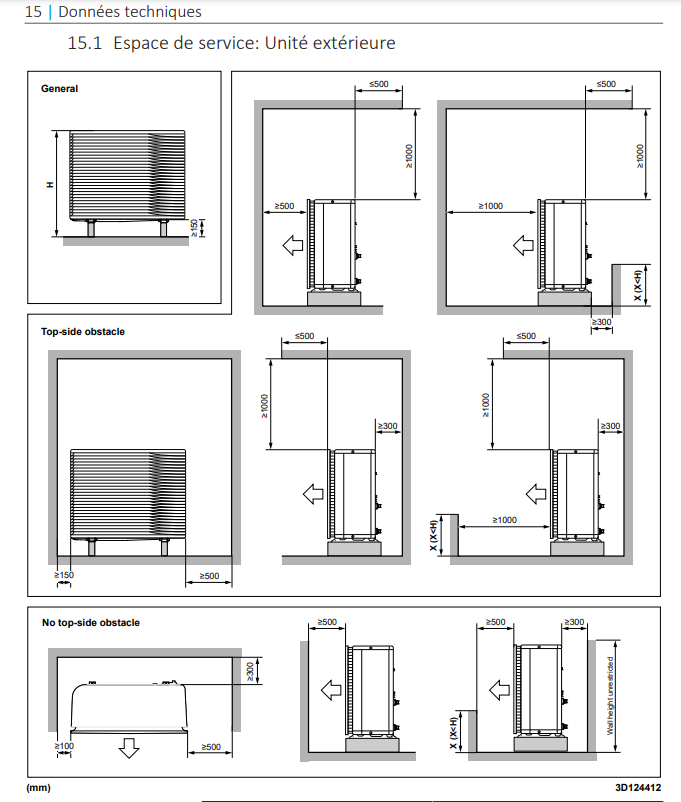
What happens if the heat pump is too close to the wall?
If you stick the heat pump a little too close to the wall at the air intake (on the evaporator at the back), the risk is a loss of power due to the poor air intake and therefore the poor capture of calories from the outside air. The COP drops and the power consumption increases.
If the fan grill on the front of the heat pump is too close to a wall that is opposite the outdoor unit, then there is a risk of a "short circuit". The rejected air that has been captured (and therefore colder) could hit the opposite wall and return to the heat pump, which will then suck it back in. Your heat pump then sucks in some of this lower-energy air, which means a drop in the coefficient of performance, and therefore an increase in the heat pump's electricity consumption.
In short, without necessarily doing a master's degree in precision, you should respect the distance recommendations of the heat pump manufacturerif it's possible. And you'd better plan the installation location of the outdoor unit so that you are not surprised.
Special cases of installation of the heat pump outdoor unit and distance PAC wall
Obstacle on top
If the outdoor unit of the heat pump is installed outside but in a room or space with a ceiling, then the distances to the various walls must be taken into account in order to avoid any air recirculation. This air recirculation would result in the heat pump operating less efficiently and would be far away from the theoretical consumption or COP data of the heat pump.
First of all, it is generally recommended to keep a distance of 1000mm between the top of the heat pump and the ceiling.
Then, if the configuration of the place lends itself to an air recirculation (short circuit), and that the external discharge grille of the heat pump is facing the solid wall, it will be necessary to leave at least one meter between this grille and the wall so that the air can escape before being sucked back on the back of the heat pump. See image below from the Daikin documentation
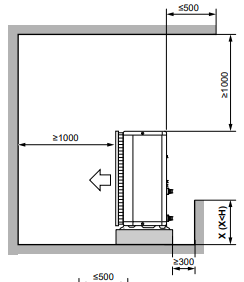
Heat pump in a wall recess
If you have a recess in your facade that would ideally hide your outdoor heat pump unit, you can consider it, but you will have to respect the distance between the heat pump and the wall at the back, as well as not sticking the heat pump too much on the sides. In general it is asked to leave on a side about 300 to 500mm, not to hinder the air intake, but also to always have a maintenance access for a technician who should intervene on the device.
How far is the heat pump from the neighbor's wall?
If you don't want to disturb your neighbors, and moreover stay within the noise guidelines, you can ask yourself how far away from the neighbor's wall and the first living area you should install your outdoor unit. The idea is that the sound generated by your outdoor unit (fan, compressor, defrosting noise) does not become a noise nuisance and bring conflict with your neighbors.
In the vast majority of cases, if you place the outdoor unit 20m or more from the first living room window of the home adjacent to yours, there is no nuisance.
However, this is not always possible.
To find out the theoretical distance to be respected, you can first refer to the acoustic data on the heat pump data sheets and make a small calculation. The Swiss heat pump association, gsp or fws, has set up a page where you can make this calculation based on several heat pump models. You enter your heat pump models, and you can play with the distance to the neighbor: you can determine by trial and error the distance at which you should place the outdoor unit. I put the link here https://www.fws.ch/fr/cercle-bruit/
However, this is only theoretical and in reality you may have to opt for a soundproof heat pump box to limit the noise.
Read also:
Our article on the heat pump installation diagram

Julien G.
Juliena mechanical engineering graduate and specialist in climate engineering since 2009, has become a writer specializing in renewable energies, with expertise in heat pumps and photovoltaic solar panels for individual housing.
See all articles by this author
